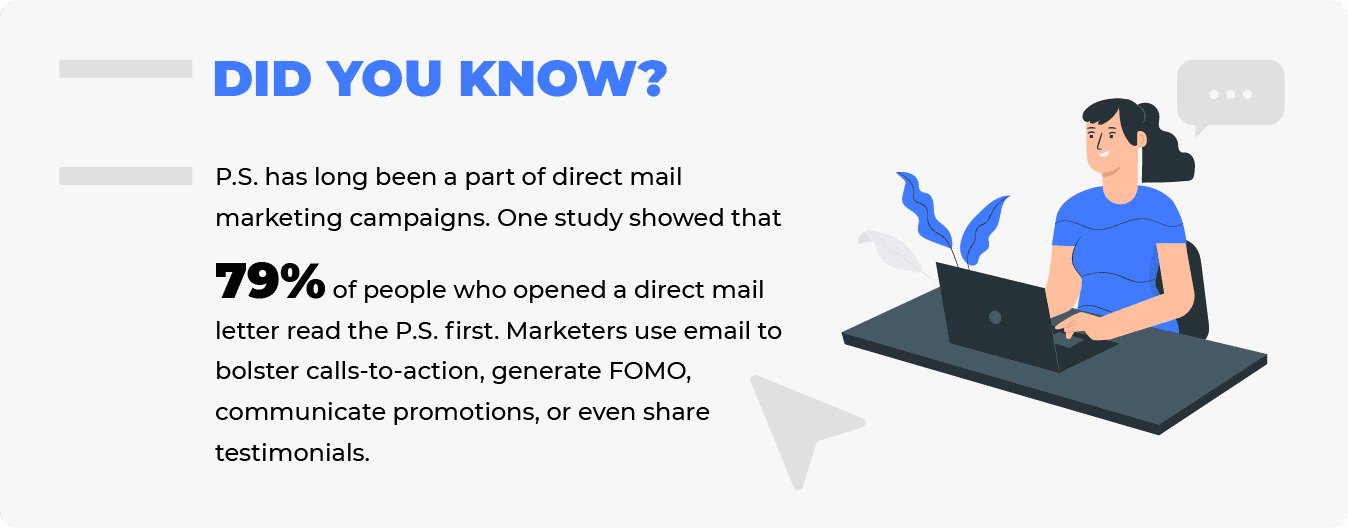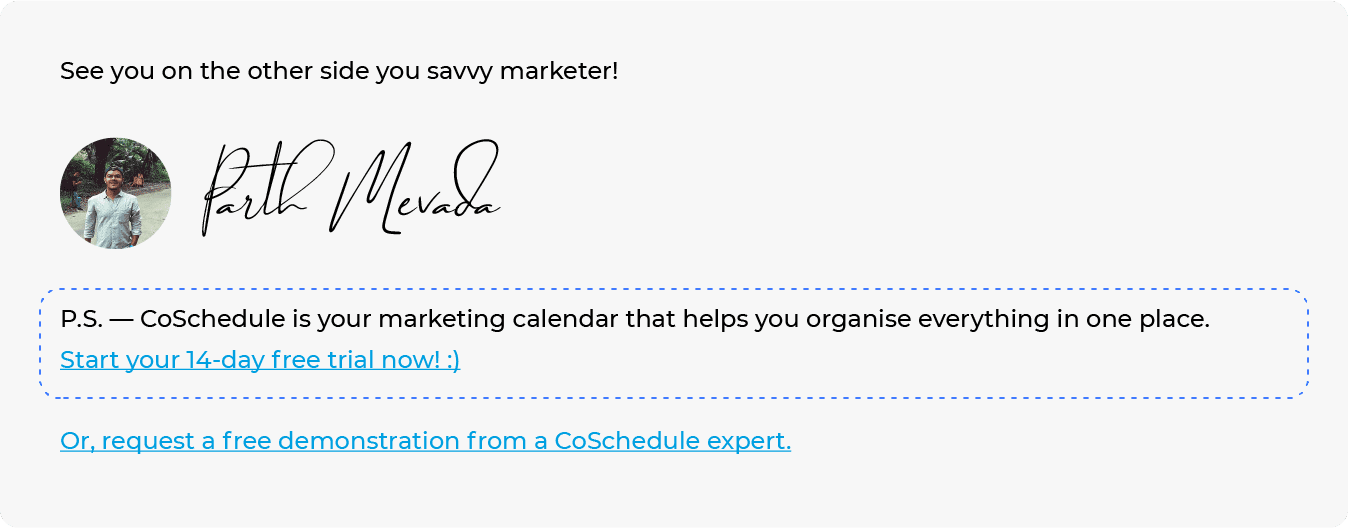P.S. stands for post scriptum, meaning “after the text”. It’s a great way to leave a personal note at the end of a letter or email.
What does P.S. stand for, and how should it be used in emails and letters? Let’s find out.
It’s crucial that you use the appropriate tone and voice while composing emails. When you email a friend or try to attract new clients, you need to make the right impression. Even though a sales email might be formatted differently than a newsletter, you might still include a P.S.
There is a common association between a P.S. meaning in a letter and the very end of an email. Although you don’t necessarily need to include a P.S. in the final paragraph of an email or letter just because you’ve reached the conclusion of it. There are just a few circumstances in which it should be applied.
When should you utilise P.S. and what does it mean? Check out the definition of P.S. below, and format your emails and messages correctly.
What is the meaning of P.S.?
The question is, what is P.S. supposed to mean? Postscript is an acronym that stands for postscript. The name postscriptum comes from Latin. As expected, everything that follows the P.S. appears after the rest of the letter, because this word means “written after.” You might write a P.S. to indicate that there is additional information that is not immediately related to the rest of the letter.
There are several circumstances in which you might end an email with “P.S.” For instance, you might use P.S. as a transition to the following email if you have an email that focuses on one issue and wants to let the reader know that another email may be on the way that would address a different topic. There are various ways that P.S. can be used, so it’s crucial that you use it correctly. In this manner, you are able to effectively convey your message to the reader and leave a favourable impression on your target segment. Whether you are sending a letter to prospective clients or an email to a friend, this can be helpful.
What is the purpose of P.S.?
P.S. emphasises that there is additional information that is not directly related to the letter’s earlier sections. People have the propensity to sign off with “P.S.” at the conclusion of almost every email or letter they send. People might also choose not to use it at all.
Of course, neither strategy is perfect, so if you choose to use P.S., make sure you use it correctly. After you have signed your name, add these initials at the bottom of the letter. After that, you use the P.S. to add a short comment to the message that doesn’t fit with the rest of the message.
Additionally, you should definitely write another letter if the comment or message you include after the P.S. ends up being the same length as the body of the letter. The extra comment shouldn’t extend beyond the length of the letter. You should have a strong foundation for your P.S. if you keep these important considerations in mind.
P.S. etiquette for emails and letters
Make sure to format an additional point appropriately if you wish to include one with your email or letter. There are a few key procedures to take while attempting to add your P.S. They consist of the:
- Postscript should go after your signature. Before entering your P.S., you must sign your name.
- Next, make sure the formatting is correct. It can be formatted in two different ways. Either P.S. or PS, which is more popular in the United States and the United Kingdom, can be used. You don’t need to put a comma after it when you actually add it to your letter. Although neither the American nor the British versions are thought to be superior, you must maintain consistency.
- PP.S. is the term used when there is an additional message to be added after the original P.S. Of course, if you like, you can format it as P.P.S. This is an indication that you need to add another comment after the P.S. This is really unusual, therefore you shouldn’t make practise it. Your reader might become frustrated. It should not be utilised in a business situation and should only be saved for lighthearted personal messages with family and friends.
- After properly formatting your P.S., you must keep the message brief. Your reader can become impatient if your P.S. message is very long because it indicates that you did not carefully plan it. If you want to include something long, you need to include it in an additional letter or in the rest of the message.
Once you’ve completed these steps, your email or letter should be prepared to send and your P.S. should be finished. Don’t forget to proofread the message to identify any mistakes you could have made in the past with the spelling or punctuation.
When asked about the PS, we usually say, “it’s an email marketing strategy.” But generally, the focus is more on how to expand the use of P.S. in email marketing strategically to get more engagement in your emails. And Route Mobile’s All-in-one Email Platform will optimise email delivery by creating personalised content and reaching the customer’s inbox at the right moment.With P.S., you’ll catch the reader’s attention.
These are only a few of the most crucial ideas you should have in mind if you want to make the most of your letters and emails. P.S. must be used correctly and in a professional manner. Make sure it is properly formatted, carefully considers what you want to add, and isn’t too long.
Next, Learn More On How To Use P.S. in Email Like a Pro





